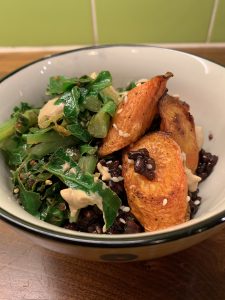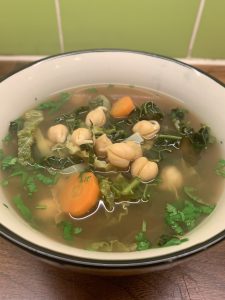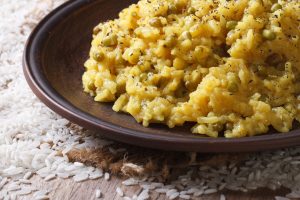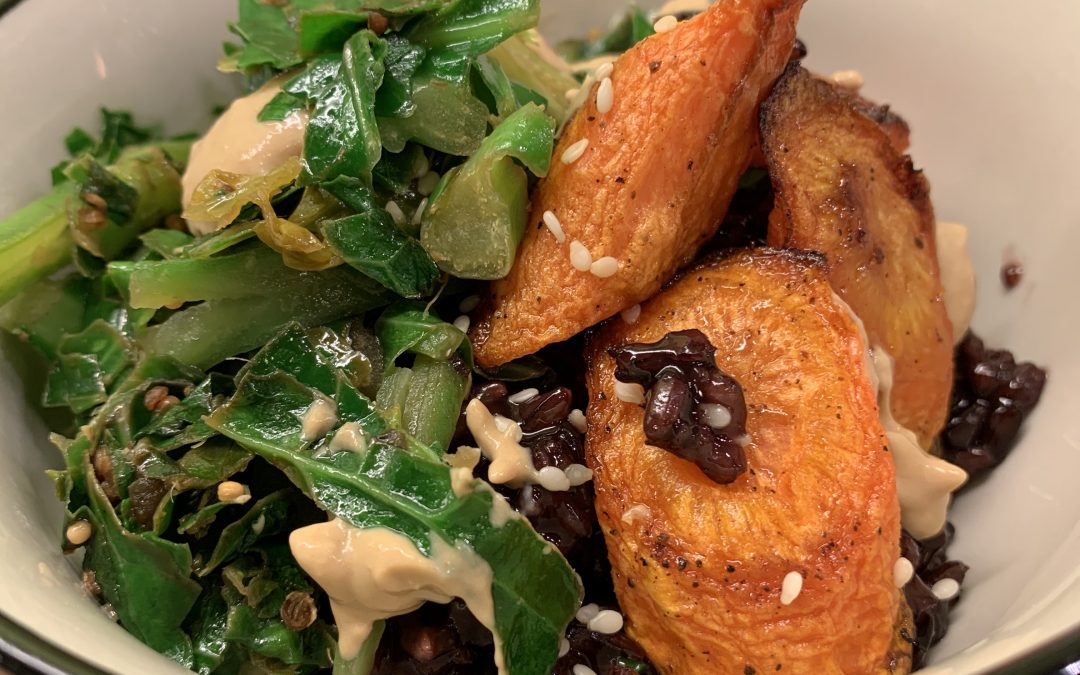The flow of the seasons has moved from the pace and mobility of summer and autumn to the still, calm nature of winter. Our Ayurvedic Winter cleanse will help you develop a daily routine to help support you through this season.
Winter is dominated by the elements of earth and water, both of which are shared by Kapha dosha. Winter is predominantly Kapha season with some Vata influences due to the cold nature of winter. Your daily routine should help balance the stagnation and heaviness of winter both physically and emotionally.
Winter brings stillness and a time for reflection. An ideal time to direct our energies inwards and enjoy the slower pace of the season. According to Ayurvedic principles, like increases like, so too much of this can feel oppressive and weigh us down physically and emotionally.
The start of a New Year is the perfect time to bring the balance of lightness and sense of purpose. Our food and lifestyle practices should also bring transformation (Pitta) energy to prevent us from getting stuck in (Kapha) reflection.
Your diet and lifestyle should be invigorating and warming. Kapha digestion can be slow and sluggish, warming spices will help stoke the digestive fire and prevent an accumulation of Ama (toxins) and Kapha in the body.
Here are some recipes to suit each dosha throughout Winter
Vata – Winter Rice Bowl

Vata is balanced by sweet, sour and salty taste. All three tastes are prominent in this dish. A small side portion of kimchi will as a little pungency to stock the digestive fire. Not too much though!!
Rice
- Here, I have used black sticky rice. You could use any sticky rice. Add a little Mirin for a slightly sweet note. It will also counteract the bitterness from the greens. Add a little ghee when cooking the rice. This is particularly grounding, moisturising and balancing for Vata.
Roasted Squash – or any other root vegetable.
Heat 1 tbs ghee in a roasting tin add cubed squash. Add salt and pepper. I’ve used carrots here as the kids aren’t keen on squash, but they loved the carrots.
Warming greens
- 1tsp ghee
- 1/2 tsp mustard seeds
- 1tsp ground coriander seeds
- thumb size piece of grated ginger
- tbs sesame seeds
Heat ghee. Add spices and allow to pop for a few minutes. Add ginger and veg and stir fry.
Sweet, sour, salty dressing
- 2 tspTamari
- 1 tsp Miso paste
- 2 tsp Mirin
- 1cm grated Ginger
- Juice of 1 lime
OR
- 1tbs Tahini
- 1tsp miso paste
- 2tsp tamari
- 1cm grated ginger
- Juice of 1 lime.
- A little water if the sauce is very thick.
Serve on its own or with a small bowl of spicy soup. Recipe below.
Kapha – Light Spicy Soup
Kapha benefits from light, warming and pungent foods during winter. The base of this recipe is Spicy Soup. You can have this on its own as a soup before your main meal to ignite the digestive fire or as a light meal with vegetables, rice or pulses.
Spicy Soup
- 2tsp coriander seeds,
- 2tsp cumin seeds,
- 2 tsp tamarind paste,
- 20 curry leaves,
- 5-6 garlic cloves,
- 10-12 slices fresh ginger,
- a little salt
Grind into a paste, add 1L of water and boil for 20 mins.
Here I have added:
- Soaked, sprouted and boiled chick peas. Soaking and sprouting improves their digestibility and are particularly balancing for Kapha due to their astringent (dry) qualities. Carrots, onions or leeks and spring greens are also a great choice for Kapha.
- Sauté the vegetables in a little oil, then add the cooked chick peas and spicy soup.
- Simmer for 5-10 mins before serving.
Kitchari
 kitchari is an Ayurvedic staple. A nourishing mix of mung beans and rice, easy on the digestion and suitable for all doshas. We have Kitchari during the mono-diet phase of the cleanse, but its a great dish to have when your digestion’s is a little upset. You can add vegetables to make it a nourishing, satisfying dish. Here we have created a spice blend to suit each of the doshas. Quantities here are enough to make a jar of spices you have on hand to add to food when you are cooking.
kitchari is an Ayurvedic staple. A nourishing mix of mung beans and rice, easy on the digestion and suitable for all doshas. We have Kitchari during the mono-diet phase of the cleanse, but its a great dish to have when your digestion’s is a little upset. You can add vegetables to make it a nourishing, satisfying dish. Here we have created a spice blend to suit each of the doshas. Quantities here are enough to make a jar of spices you have on hand to add to food when you are cooking.
Ingredients:
Pitta Balancing Spice Mix:
- 2tbs Fennel seeds
- 2tbs Cumin seeds
- 2tbs Coriander seeds
- 1tbs fenugreek seeds
- Seeds of 10 cardamon pods
- 1/2tsp Saffron strands
- 1tbs cinnamon powder
Kitcahri:
75g yellow mung dhal
75g basmati rice
Thumb sized piece of grated fresh ginger
2 tbs unsweetened shredded coconut – desiccated coconut
3 tbs ghee
1/2 tsp rock salt
The how to:
For each recipe heat the oil and add the dry spices, garlic, ginger (where specified). Add mung dahl and 250mls water. Simmer for 5 mins and add the rice and 500mls water. Simmer until all ingredients are soft.
For the pitta recipe, finish with desiccated coconut.
Why it’s so good
Kitchari provides an easy to digest, nourishing meal so it’s perfect if your digestion is a little out of balance. The suggested spices will help support the digestive fire for each of the doshas.
Vegetables can also be added to make it a really satisfying meal. You could try: diced courgette, spinach, green beans, asparagus…
Balancing the Doshas
The spice mix for pitta will help to cool excess heat. Pitta dosha tends towards tikshnagni, meaning the digestive fire is burins too strongly. If this is the case you may feel it in the form of acid indigestion.
Vata Spice Mix
- 2tbs Fennel seeds
- 2tbs Coriander seeds
- 2tbd cumin seeds
- 1tbs ground turmeric
- 2tbs group ginger
- 1tsp asafoetida (hing)
- 2tsp rock salt
Mung Dal Kitchari – Vata
75g basmati rice
75g yellow split mung dhal 3 tbs ghee
Thumb size piece of fresh grated ginger
1 clove garlic
2tbs of Vata spice mix.
Kapha Spice Mix
- 2tbs Coriander seeds
- 2tbs cumin seeds
- 2tbs mustard seeds
- 1tbs ground ginger
- 1tbs ground turmeric
- 1tsp ground cloves
- 2tsp ground black pepper or pippali
- 1tsp chilli powder
Mung Dhal Kitchari – (Kapha)
- 75g yellow mung dhal
- 75g basmati rice
- 1 tbs ghee
- Thumb size piece of fresh ginger.
- 4 bay leaves
- 2tbs Kapha spice mix 1/2 tsp salt
- 750mls water

